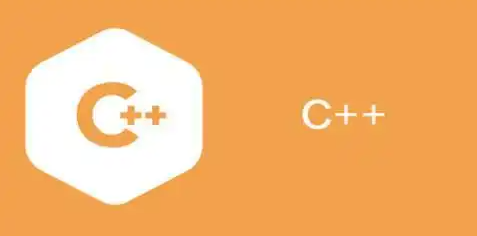
Hello everyone! Today we will discuss how to effectively use C++ exception handling in Excel data processing.
1. Why is Exception Handling Necessary?
Imagine you are importing a 500MB Excel file and suddenly discover that the file is corrupted—an application without exception handling would crash directly, while one with exception handling can gracefully inform the user: “There seems to be a problem with the file, please check and try again.”
1.1 Basic Exception Handling Structure
try {
// Attempt to execute code that may fail
importExcel("data.xlsx");
} catch (const std::exception& e) {
// Catch and handle the exception
std::cerr << "Import failed: " << e.what() << std::endl;
showErrorMessage("Import failed: " + std::string(e.what()));
}
Tip: <span>std::exception</span> is the base class for all standard exceptions, catching it can handle most error cases.
2. Common Exceptions in Excel Data Processing
2.1 File-Related Exceptions
void loadExcelFile(const std::string& filename) {
std::ifstream file(filename);
if (!file) {
throw std::runtime_error("Cannot open file: " + filename);
}
// Check file header to confirm it is an Excel file
char header[4];
file.read(header, 4);
if (std::string(header, 4) != "\x50\x4B\x03\x04") { // ZIP file header
throw std::runtime_error("Not a valid Excel file");
}
// Continue processing the file...
}
Note: Modern Excel (.xlsx) files are actually ZIP archives, checking the file header can quickly verify file validity.
2.2 Data Format Exceptions
When processing cell data, format issues often arise:
double parseCellValue(const std::string& cell) {
try {
return std::stod(cell);
} catch (const std::invalid_argument&) {
throw std::runtime_error("Invalid number format: " + cell);
} catch (const std::out_of_range&) {
throw std::runtime_error("Value out of range: " + cell);
}
}
3. Custom Exception Classes
To better differentiate error types, we can create our own exception classes:
class ExcelException : public std::runtime_error {
public:
enum ErrorType {
FILE_ERROR,
FORMAT_ERROR,
CALCULATION_ERROR
};
ExcelException(ErrorType type, const std::string& msg)
: std::runtime_error(msg), type(type) {}
ErrorType getType() const { return type; }
private:
ErrorType type;
};
// Usage example
void processWorksheet() {
// ...
if (cell.empty()) {
throw ExcelException(ExcelException::FORMAT_ERROR,
"Empty cells are not allowed");
}
// ...
}
Best Practice: Custom exceptions can carry more contextual information, facilitating subsequent handling.
4. Resource Management and Exception Safety
4.1 Application of RAII Technique
Use RAII (Resource Acquisition Is Initialization) to ensure resource release:
class ExcelFile {
public:
ExcelFile(const std::string& filename)
: handle(openExcelFile(filename)) {
if (!handle) {
throw ExcelException(ExcelException::FILE_ERROR,
"Failed to open file");
}
}
~ExcelFile() {
if (handle) closeExcelFile(handle);
}
// Disable copy
ExcelFile(const ExcelFile&) = delete;
ExcelFile& operator=(const ExcelFile&) = delete;
private:
ExcelFileHandle* handle; // Hypothetical Excel file handle
};
4.2 Transaction Processing Pattern
For data import, which involves multiple steps, a transaction pattern can be used:
void importData() {
std::vector<DataRecord> tempData;
try {
// Step 1: Read data into a temporary container
readDataTo(tempData);
// Step 2: Validate data
validateData(tempData);
// Step 3: Commit data
commitData(tempData);
} catch (...) {
rollbackImport(); // Rollback operation
throw; // Rethrow exception
}
}
5. Best Practices for Exception Handling
- Handle exceptions at the appropriate abstraction level: Exceptions thrown at lower levels should be handled at the appropriate level
- Avoid overusing exceptions: Do not use exceptions for regular flow control
- Log exception context: Record detailed error information for troubleshooting
void importExcelWrapper() {
try {
importExcel("data.xlsx");
} catch (const ExcelException& e) {
logError("Excel operation failed", e.what(), e.getType());
showUserFriendlyMessage(e.getType());
} catch (const std::exception& e) {
logError("System error", e.what());
showErrorMessage("The system is busy, please try again later");
} catch (...) {
logError("Unknown error");
showErrorMessage("An unknown error occurred");
}
}
6. Practical Exercises
Try to implement the following functionalities:
- Write a safe CSV parser that handles various format exceptions
- Add out-of-memory exception handling to the Excel export functionality
- (Challenge) Implement a remote Excel download feature with a retry mechanism
Tip: Using the <span>std::nothrow</span> version of new can avoid throwing exceptions on memory allocation failure.
7. Summary and Improvement
Today we learned about:
- Common types of exceptions in Excel data processing
- How to design and throw meaningful custom exceptions
- Using RAII to ensure exception safety
- Layered exception handling strategies
Advanced Suggestions:
- Study
<span>std::exception_ptr</span>for handling cross-thread exceptions - Learn about C++17’s
<span>std::optional</span>and<span>std::variant</span>as alternatives to exceptions - Learn to use frameworks like Google Test to write exception test cases
Remember: Good exception handling is not a remedy after the fact, but something to consider during the design phase. Just as buildings need fire exits, our programs also need safe error handling paths.